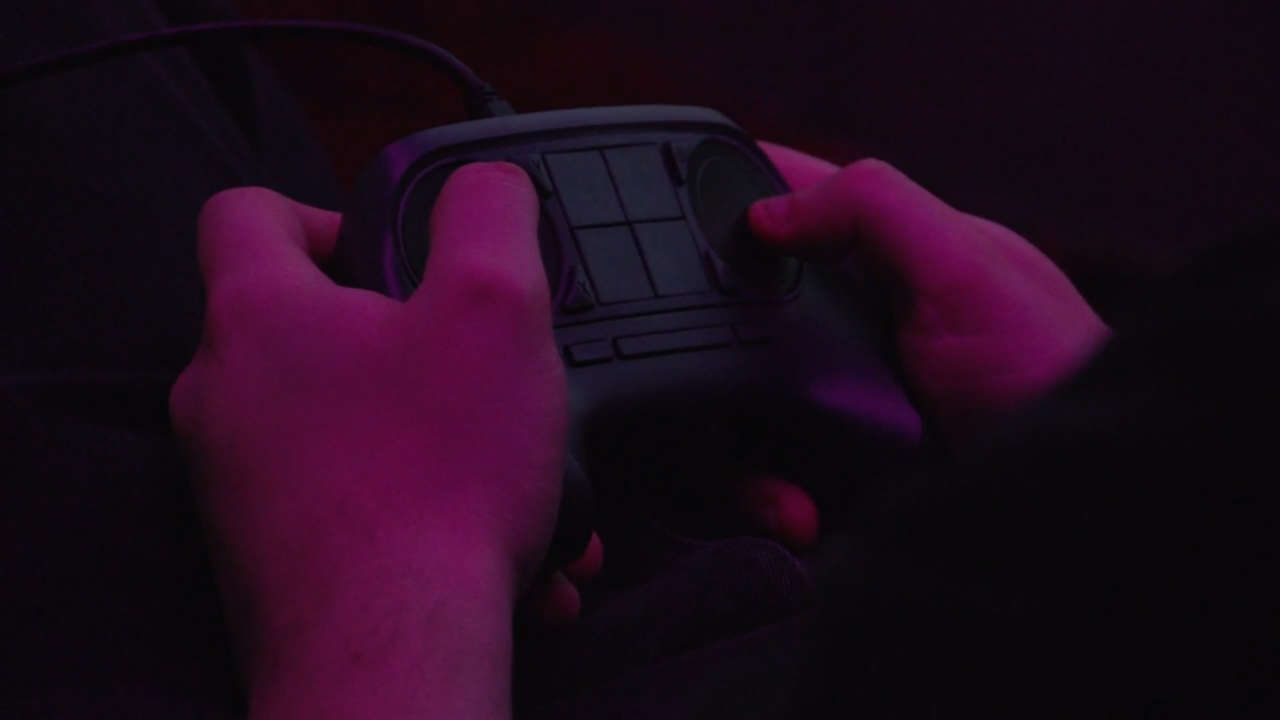Valve unveiled a baker's dozen of new steam machines at its CES event yesterday, but for many of the attendees, it was the new controller that stole the show. Sure, the computers were compact and flashy, but they weren't exactly breaking new ground; small gaming PCs and laptops have been available for years. More than the size of the computer itself, it's PC games' reliance on a mouse and keyboard setup that's stymied the transition from the desktop to the living room, and this is precisely what Valve is attempting to resolve with its Steam controller.
Successfully replicating PC controls on a singular handheld device is no small feat, of course, but the touchpad driven design of the new controller has a lot of promise. It offers a smooth surface for your thumbs to glide across, much like a laptop's touchpad, and there are added elements such as two raised ridges and a haptic feedback system that clicks according to how fast or slow you move from one point to another. While the touchpads don't immediately feel as precise as a mouse, they offer an impressive level of sensitivity, and I can see a day when I would prefer them over analog sticks, but it's not the sort of switch one can make overnight; not the player, and certainly not developers.

During my time with the controller, there was a nagging feeling that the games on hand hadn't been optimized. As in a video from Valve a few weeks ago, the games' standard controls had simply been remapped to the controller without any further tinkering. The fact that it was working with only minimal configuration is impressive, but the limit of the touchpads' sensitivity was also difficult to discern. The sensation of the haptic feedback system did a fair job of communicating how fast or slow your movements were, but it was also immediately distracting. Imagine an Xbox 360 controller vibrating with every movement of the right analog stick. Weird? You bet it is.
The other issue facing the Steam controller is the unusual button layout. With a button on the back of each handle, two triggers, two shoulder buttons, and eleven buttons between the touchpads, it feels crowded. Further complicating the issue is the general lack of identifiers or labels. Presumably, you'll remap a game's controls to suit your needs, but if you've never played said game, how do you know what to map where? Typically, a game will tell you to press a keyboard key or a clearly labeled button on an Xbox 360 controller, for example, but when I was instructed to press "E" while playing Portal, I had to cycle through all 17 buttons on the controller to figure out which of those had been mapped to "E." Sure, the number of buttons crammed onto the Steam controller is impressive, and potentially very useful, but the burden of usability is going to fall on game developers and players unless Valve finds a way to standardize button names and control schemes.
What's Become Of Batman Games? | Spot On Apex Legends: Official Upheaval Gameplay Trailer SteamWorld Heist II | Gameplay Deep Dive Trailer Best Fallout 4 Mods For People That Don't Care About Settlements LEGO Fortnite | Star Wars LEGO Pass: Rebel Adventure Official Explainer Video Fortnite - Official Star Wars Lands Update Event Gameplay Trailer Oculus Rift vs. Sony's HMZ-T3Q - CES 2014 Oculus Plus Virtuix Omni Treadmill Equals Holodeck - CES 2014 CES for Gamers in 60 Seconds - Part 2 Updated RetroN 5 Spotted on the Show Floor - CES 2014 Top 5 Gaming Innovations - CES 2014 Steam Machines Breakdown - CES 2014
Please enter your date of birth to view this video
By clicking 'enter', you agree to GameSpot's
Terms of Use and Privacy Policy
This early in the game, it wouldn't be fair to write off the Steam controller, but Valve clearly has a lot of kinks to work out before its ready for the mass market. Outside of enthusiast PC gaming circles, most consumers shun peripherals that aren't immediately viable, or those that require exhaustive tinkering. Luckily for Valve, it's in a position where it can afford to merely court early adopters, but if it hopes that its controller will become the de facto PC gaming peripheral in the long run, the burden is going to fall on Valve's engineers and software partners to make it a reality.
